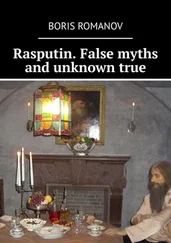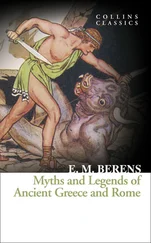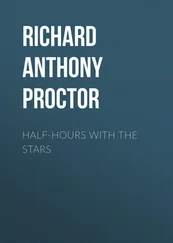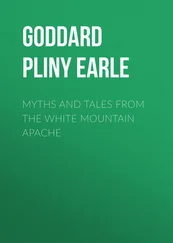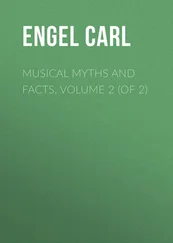Richard A. Proctor - Myths and Marvels of Astronomy
Здесь есть возможность читать онлайн «Richard A. Proctor - Myths and Marvels of Astronomy» — ознакомительный отрывок электронной книги совершенно бесплатно, а после прочтения отрывка купить полную версию. В некоторых случаях можно слушать аудио, скачать через торрент в формате fb2 и присутствует краткое содержание. Жанр: foreign_edu, Физика, на английском языке. Описание произведения, (предисловие) а так же отзывы посетителей доступны на портале библиотеки ЛибКат.
- Название:Myths and Marvels of Astronomy
- Автор:
- Жанр:
- Год:неизвестен
- ISBN:нет данных
- Рейтинг книги:5 / 5. Голосов: 1
-
Избранное:Добавить в избранное
- Отзывы:
-
Ваша оценка:
- 100
- 1
- 2
- 3
- 4
- 5
Myths and Marvels of Astronomy: краткое содержание, описание и аннотация
Предлагаем к чтению аннотацию, описание, краткое содержание или предисловие (зависит от того, что написал сам автор книги «Myths and Marvels of Astronomy»). Если вы не нашли необходимую информацию о книге — напишите в комментариях, мы постараемся отыскать её.
Myths and Marvels of Astronomy — читать онлайн ознакомительный отрывок
Ниже представлен текст книги, разбитый по страницам. Система сохранения места последней прочитанной страницы, позволяет с удобством читать онлайн бесплатно книгу «Myths and Marvels of Astronomy», без необходимости каждый раз заново искать на чём Вы остановились. Поставьте закладку, и сможете в любой момент перейти на страницу, на которой закончили чтение.
Интервал:
Закладка:
But while we have abundant reason for believing that in Egypt, even in the days of Cheops and Chephren, extreme importance was attached to the character of the place of burial for distinguished persons, there is nothing in what is known respecting earlier Egyptian ideas to suggest the probability that any monarch would have devoted many years of his subjects' labour, and vast stores of material, to erect a mass of masonry like the Great Pyramid, solely to receive his own body after death. Far less have we any reason for supposing that many monarchs in succession would do this, each having a separate tomb built for him. It might have been conceivable, had only the Great Pyramid been erected, that the structure had been raised as a mausoleum for all the kings and princes of the dynasty. But it seems utterly incredible that such a building as the Great Pyramid should have been erected for one king's body only—and that, not in the way described by Humboldt, when he speaks of men commemorating the spot where rest the remains of those whose memory they cherish, but at the expense of the king himself whose body was to be there deposited. Besides, the first pyramid, the one whose history must be regarded as most significant of the true purpose of these buildings, was not built by an Egyptian holding in great favour the special religious ideas of his people, but by one who had adopted other views and those not belonging, so far as can be seen, to a people among whom sepulchral rites were held in exceptional regard.
A still stronger objection against the exclusively tombic theory resides in the fact that this theory gives no account whatever of the characteristic features of the pyramids themselves. These buildings are all, without exception, built on special astronomical principles. Their square bases are so placed as to have two sides lying east and west, and two lying north and south, or, in other words, so that their four faces front the four cardinal points. One can imagine no reason why a tomb should have such a position. It is not, indeed, easy to understand why any building at all, except an astronomical observatory, should have such a position. A temple perhaps devoted to sun-worship, and generally to the worship of the heavenly bodies, might be built in that way. For it is to be noticed that the peculiar figure and position of the pyramids would bring about the following relations:—When the sun rose and set south of the east and west points, or (speaking generally) between the autumn and the spring equinoxes, the rays of the rising and setting sun illuminated the southern face of the pyramid; whereas during the rest of the year, that is, during the six months between the spring and autumn equinoxes, the rays of the rising and setting sun illuminated the northern face. Again, all the year round the sun's rays passed from the eastern to the western face at solar noon. And lastly, during seven months and a half of each year, namely, for three months and three quarters before and after midsummer, the noon rays of the sun fell on all four faces of the pyramid, or, according to a Peruvian expression (so Smyth avers), the sun shone on the pyramid 'with all his rays.' Such conditions as these might have been regarded as very suitable for a temple devoted to sun-worship. Yet the temple theory is as untenable as the tomb theory. For, in the first place, the pyramid form—as the pyramids were originally built, with perfectly smooth slant-faces, not terraced into steps as now through the loss of the casing-stones—was entirely unsuited for all the ordinary requirements of a temple of worship. And further, this theory gives no explanation of the fact that each king built a pyramid, and each king only one. Similar difficulties oppose the theory that the pyramids were intended to serve as astronomical observatories. For while their original figure, however manifestly astronomical in its relations, was quite unsuited for observatory work, it is manifest that if such had been the purpose of pyramid-building, so soon as the Great Pyramid had once been built, no other would be needed. Certainly none of the pyramids built afterwards could have subserved any astronomical purpose which the first did not subserve, or have subserved nearly so well as the Great Pyramid those purposes (and they are but few) which that building may be supposed to have fulfilled as an astronomical observatory.
Of the other theories mentioned at the beginning of this paper none seem to merit special notice, except perhaps the theory that the pyramids were made to receive the royal treasures, and this theory rather because of the attention it received from Arabian literati, during the ninth and tenth centuries, than because of any strong reasons which can be suggested in its favour. 'Emulating,' says Professor Smyth, 'the enchanted tales of Bagdad,' the court poets of Al Mamoun (son of the far-famed Haroun al Raschid) 'drew gorgeous pictures of the contents of the pyramid's interior.... All the treasures of Sheddad Ben Ad the great Antediluvian king of the earth, with all his medicines and all his sciences, they declared were there, told over and over again. Others, though, were positive that the founder-king was no other than Saurid Ibn Salhouk, a far greater one than the other; and these last gave many more minute particulars, some of which are at least interesting to us in the present day, as proving that, amongst the Egypto-Arabians of more than a thousand years ago, the Jeezeh pyramids, headed by the grand one, enjoyed a pre-eminence of fame vastly before all the other pyramids of Egypt put together; and that if any other is alluded to after the Great Pyramid (which has always been the notable and favourite one, and chiefly was known then as the East pyramid), it is either the second one at Jeezeh, under the name of the West pyramid; or the third one, distinguished as the Coloured pyramid, in allusion to its red granite, compared with the white limestone casings of the other two (which, moreover, from their more near, but by no means exact, equality of size, went frequently under the affectionate designation of "the pair").'
The report of Ibn Abd Alkohm, as to what was to be found in each of these three pyramids, or rather of what, according to him, was put into them originally by King Saurid, runs as follows: 'In the Western pyramid, thirty treasuries filled with store of riches and utensils, and with signatures made of precious stones, and with instruments of iron and vessels of earth, and with arms which rust not, and with glass which might be bended and yet not broken, and with strange spells, and with several kinds of alakakirs (magical precious stones) single and double, and with deadly poisons, and with other things besides. He made also in the East' (the Great Pyramid) 'divers celestial spheres and stars, and what they severally operate in their aspects, and the perfumes which are to be used to them, and the books which treat of these matters. He put also into the coloured pyramid the commentaries of the priests in chests of black marble, and with every priest a book, in which the wonders of his profession and of his actions and of his nature were written, and what was done in his time, and what is and what shall be from the beginning of time to the end of it.' The rest of this worthy's report relates to certain treasurers placed within these three pyramids to guard their contents, and (like all or most of what I have already quoted) was a work of imagination. Ibn Abd Alkohm, in fact, was a romancist of the first water.
Perhaps the strongest argument against the theory that the pyramids were intended as strongholds for the concealment of treasure, resides in the fact that, search being made, no treasure has been discovered. When the workmen employed by Caliph Al Mamoun, after encountering manifold difficulties, at length broke their way into the great ascending passage leading to the so-called King's Chamber, they found 'a right noble apartment, thirty-four feet long, seventeen broad, and nineteen high, of polished red granite throughout, walls, floor, and ceiling, in blocks squared and true, and put together with such exquisite skill that the joints are barely discernible to the closest inspection. But where is the treasure—the silver and the gold, the jewels, medicines, and arms?—These fanatics look wildly around them, but can see nothing, not a single dirhem anywhere. They trim their torches, and carry them again and again to every part of that red-walled, flinty hall, but without any better success. Nought but pure polished red granite, in mighty slabs, looks upon them from every side. The room is clean, garnished too, as it were, and, according to the ideas of its founders, complete and perfectly ready for its visitors so long expected, so long delayed. But the gross minds who occupy it now, find it all barren, and declare that there is nothing whatever for them in the whole extent of the apartment from one end to another; nothing except an empty stone chest without a lid.'
Читать дальшеИнтервал:
Закладка:
Похожие книги на «Myths and Marvels of Astronomy»
Представляем Вашему вниманию похожие книги на «Myths and Marvels of Astronomy» списком для выбора. Мы отобрали схожую по названию и смыслу литературу в надежде предоставить читателям больше вариантов отыскать новые, интересные, ещё непрочитанные произведения.
Обсуждение, отзывы о книге «Myths and Marvels of Astronomy» и просто собственные мнения читателей. Оставьте ваши комментарии, напишите, что Вы думаете о произведении, его смысле или главных героях. Укажите что конкретно понравилось, а что нет, и почему Вы так считаете.

